Terrace board: types and features of the material

Terraces and outdoor recreation areas today can increasingly be found in summer cottages. After all, a modern dacha is no longer a place for growing crops of potatoes and cucumbers, but a place of rest from the bustle of the city, a place of friendly meetings and family gatherings. Where else can you spend warm summer evenings with a cup of tea and pies if not on a cozy and beautiful terrace?
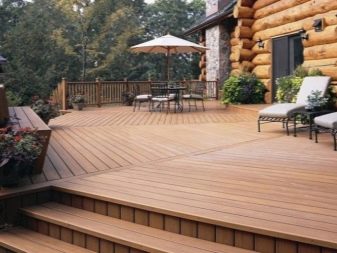
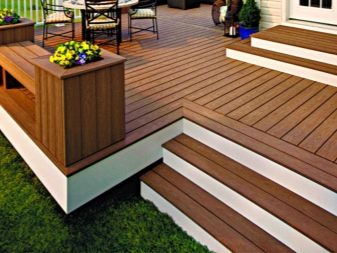
Peculiarities
Let's make a reservation right away that confusion in terminology should be avoided - although the veranda and the terrace are similar, they are still different buildings. We will rely on the definition of SNiP 2.08.01. -89, where a terrace is an open or closed space that may or may not have a fence, which is an extension to the building. It can be placed directly on the ground, represent a platform between the basement and the first floor, or be located on supports. A veranda is considered to be a glazed unheated room built-in or attached to a building. Before starting work, decide whether you need an open terrace or a glazed veranda, because the choice of materials for construction will depend on this.
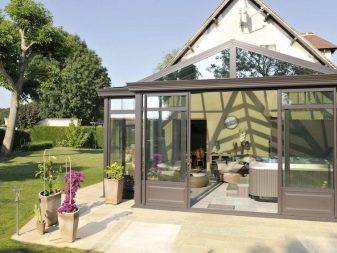
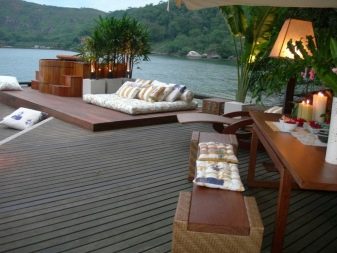
The choice of finishing materials for outdoor areas is not easy, besides, manufacturers offer a lot of different options. In addition, we often have doubts about the relationship between the durability of materials and their appearance. Experts believe that decking is exactly the material that will allow you not to worry about the service life of the coating. In addition, it is represented on the construction market very widely and, depending on preferences, you can choose a completely natural or composite material. Both wooden and plastic decking boards are distinguished by increased resistance to moisture and temperatures, a special non-slip surface and ease of maintenance.
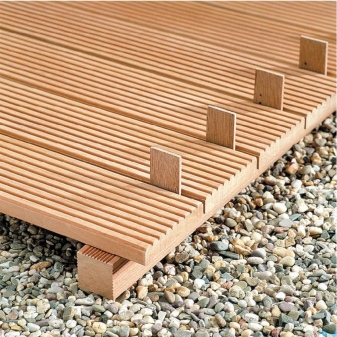
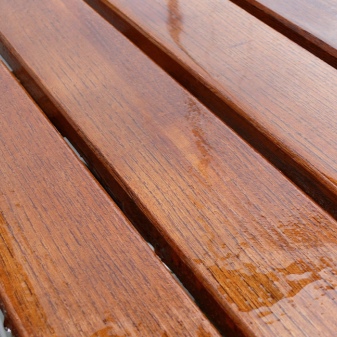
Specifications
There is a special group of materials for finishing the floor on the terrace - terrace board. This is a modern finishing material made of natural wood with polymer additives, produced on modern automated equipment. The finished finishing material is impregnated with moisture-proof and other protective agents. All this is necessary in order for the board to serve you as long as possible, because even if your terrace has a roof, precipitation will fall on the site.
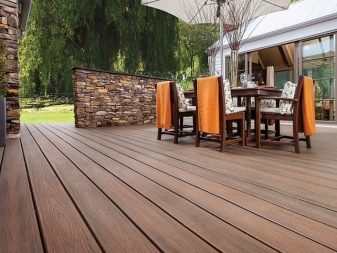
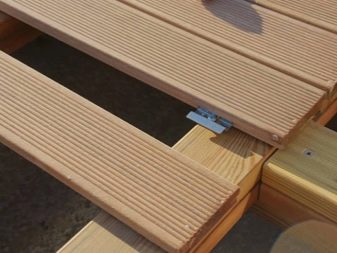
Today manufacturers offer:
- wooden board without processing;
- with special treatment;
- made of wood and polymeric materials.

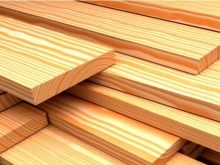
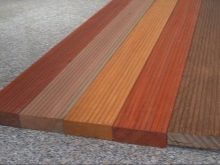
It can be difficult to distinguish finishing materials with the addition of polymers from natural ones, but a wooden board will necessarily have grooves along the narrow edge and special cuts along the long side.

The main criteria that the decking must meet.
- Resistant to temperature changes and low temperatures (since it will be cold on the terrace in winter);
- Resistant to sunlight (some finishing materials can deteriorate or change color under ultraviolet rays);
- Increased moisture resistance;

- Resistance to external damage (a prerequisite, since you will inevitably move furniture, flower pots and other interior items located on the terrace);
- Using for the manufacture of special types of wood, suitable for the manufacture of this finishing material. Expensive materials include decking made of larch, ipé wood, oak, and so on. Inexpensive - products from coniferous wood species, and the resin emitted by them is a wonderful natural substitute for chemical processing.
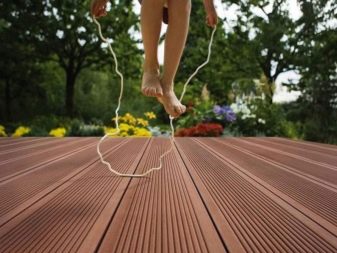
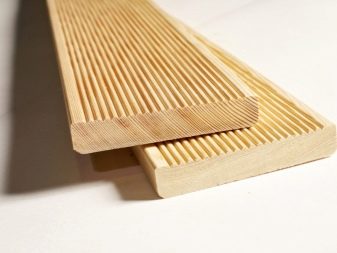
Scope of application
In fact, the range of applications for decking is much wider than finishing outdoor recreation areas. Decking is a finishing material that has not only high quality, but also excellent aesthetic characteristics. It is used for finishing the floor of living rooms, kitchens and bedrooms.
Covering the floor of loggias and balconies will look great with decking. By the way, if necessary, you can use this material in the decoration of the walls of the loggias. Due to its resistance to temperature extremes, the surface of the walls will retain an attractive appearance for many years.
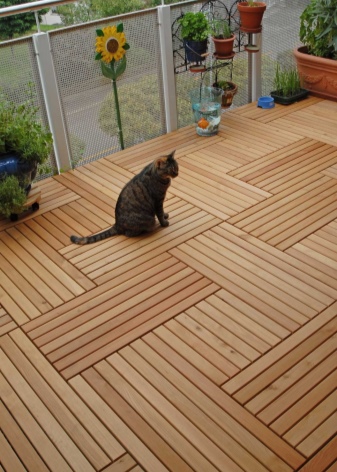
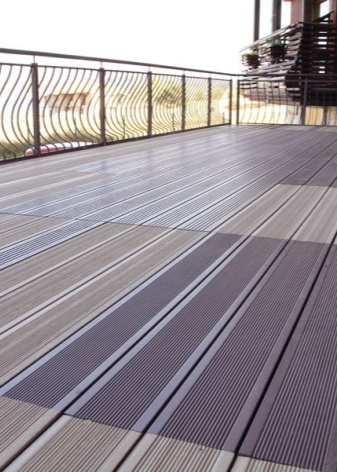
Arrangement of garden paths often causes a lot of difficulties for the owners of summer cottagesas many materials become slippery from rain. Decking is a great option! It does not slip even with abundant precipitation or frost, as it has a specially treated surface. Thanks to this property, the material will become a worthy replacement for tiles or stone on the sites adjacent to the pool.
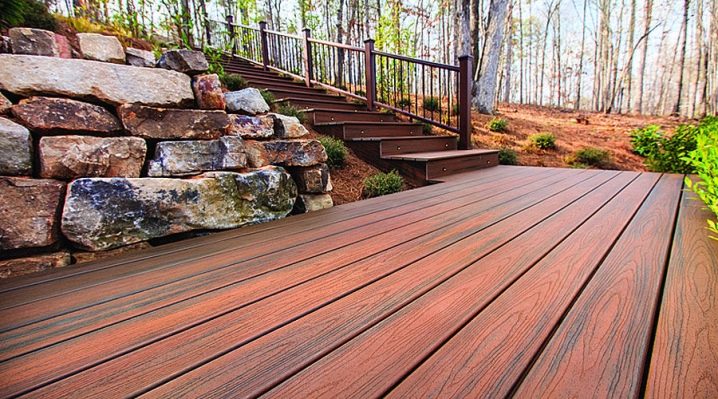
If your site is adjacent to a river or lake, and you are a big fan of recreation by the water and on the water, then there is no better material for embankments, bridges or piers than a terrace board. By the way, in addition to the fact that this material will not let you slip, it also retains heat for a long time.
Bath or sauna floor undergoes severe tests - there is both high humidity and high temperatures. Be sure that the decking will not only withstand such an "aggressive" atmosphere, but also perfectly retain heat.
Another option for using decking is to use it instead of a picket fence. The service life of the fence will increase several times!
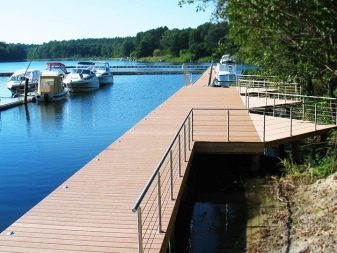
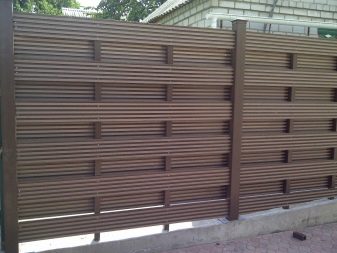
Types of material
The criteria for choosing a decking board are:
- thickness;
- material;
- profile view;
- surface texture.

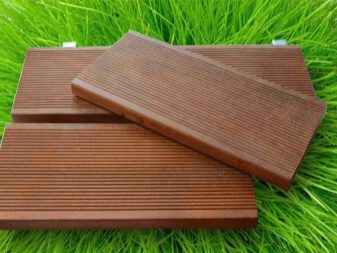
The thickness of the board can be different - from 1.8 cm to 4.8 cm.
The surface texture ranges from perfectly smooth to ribbed boards.
By the type of profile, a "beveled" board or planken is distinguished and a standard, rectangular one. Beveled planken is a universal material and is used in the decoration of gazebos, fences and houses. The long edge of this finishing board has a certain angle of inclination (or rounding), therefore, when laying the boards, they "go" one under the other, which ensures a reliable connection of the elements and complete concealment of possible gaps.
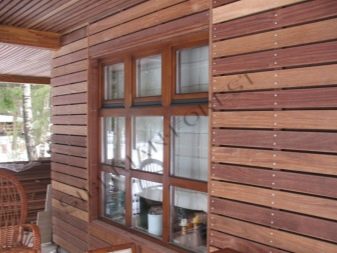
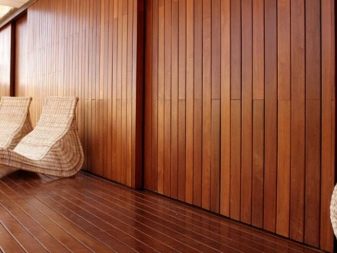
Straight is an ordinary board, sometimes with grooves, sometimes without them.
We can say that it is similar to the well-known lining, but the wear resistance indicators are much higher.
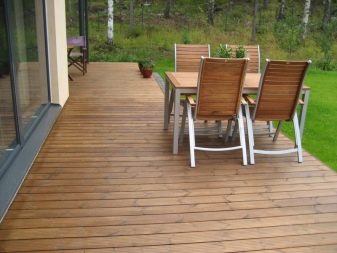

Now let's talk about the most important criterion - choose natural or artificial material?
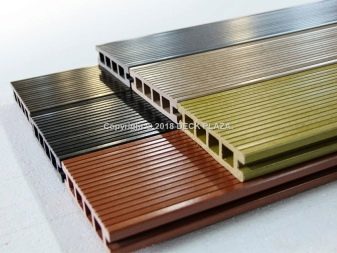
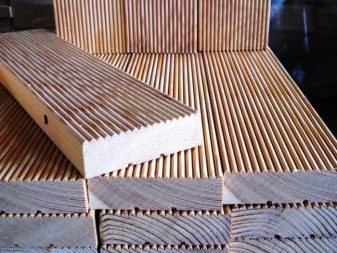
Natural material
The choice of natural decking is quite large. These are traditional species such as oak and larch, as well as exotic ones. For example, a decking made of Massaranduba will be so strong that it can be called "iron". The Kumaru board is also surprisingly durable, as it contains oily substances. Also, manufacturers offer us today a merabu board - a strong and very beautiful board made of bankray wood, which can be laid directly on the ground (it is easy to recognize by the presence of small cracks, which, however, does not affect its durability).
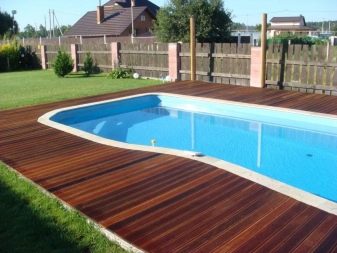
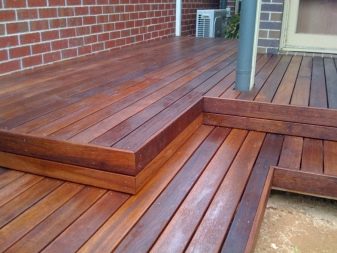
Teak flooring is also durable, but of course quite expensive. As, however, all plankens from exotic rocks. If this does not suit you, we recommend stopping at a board made of larch or any coniferous trees.Our ancestors were well aware of the amazing properties of larch - this wood was used in shipbuilding, made piles for bridges and much more.
Larch and conifers are often used to make a material called "deck" board. It does not have the usual for such coatings connection ("lock") at the ends, but, on the contrary, is fastened so that a gap remains between the elements. To make the gaps even and neat, they use special inserts when laying, and then they are removed. Clearances are necessary when your decking needs ventilation or water drainage needs to be considered.
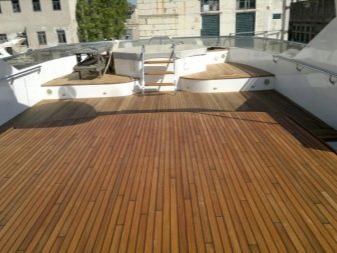

Artificial material
Decking is widely used in suburban construction - this is the name of a composite veranda and terrace board. Decking is a material that combines wood and polymers and has excellent performance characteristics. The finish looks like natural wood, while the board is flexible enough, very strong, moisture resistant and durable. A definite plus is the variety of colors and shades.

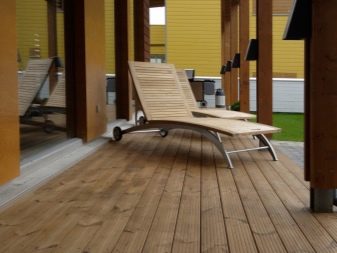
Although composite finishing materials have appeared on the construction market relatively recently, many experts are sure that plastic board is best suited for open areas. No fungi and rotting processes, does not change the appearance either under the rays of the sun or in the pouring rain, it will withstand both frost and heat.
The plastic board does not need to be repainted and will serve for many years without the need for replacement, because it can withstand even constant contact with water and is absolutely not interesting to beetles that spoil wood.
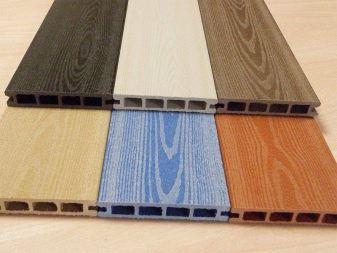
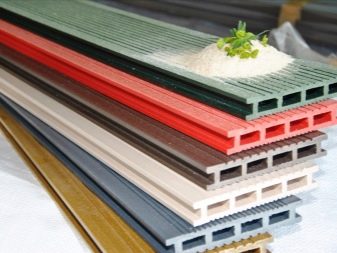
Polymer (PVC) board is a hollow structure with multiple stiffeners inside, which means that it is indispensable where, for whatever reason, we must use lightweight materials, avoiding strengthening the base.
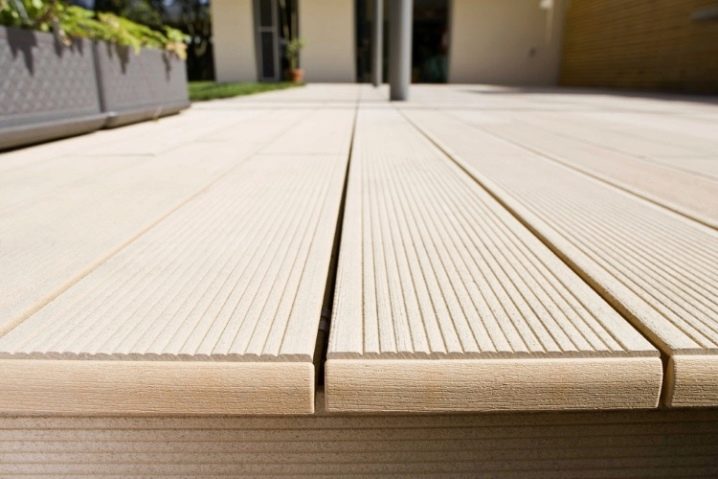
Recommendations for the installation of decking
Such a floor covering as a decking can be easily laid with your own hands. There are two styling methods, both are easy even for a beginner.
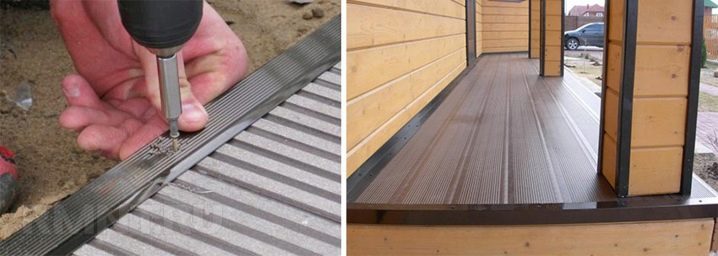
Open way
It consists in the fact that along the entire perimeter of the territory where you intend to mount the flooring, it is necessary to install logs, which will act as a fastening structure and a "pillow".
The deck board will be attached directly to the joists using self-tapping screws, which are treated with an anti-corrosion solution. When assembling a decking, you need to pay attention to the presence of gaps between the elements. If there are any, then you need to knock the board to the board with a special rubber mallet.
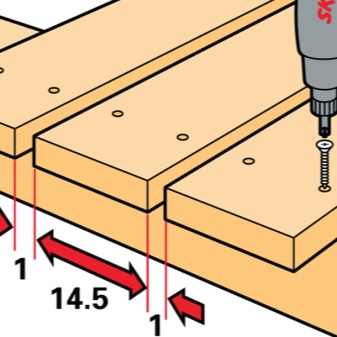
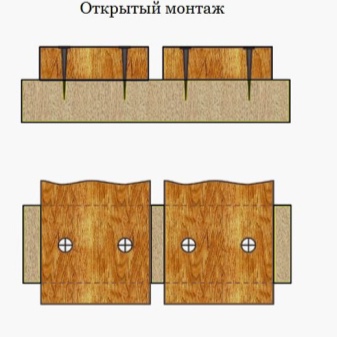
Closed way
The closed method assumes the presence of a concrete base with a slight angle of inclination. It so happens that a beginner does not get a base with a slope - in this case, on a concrete base, you will have to make grooves with a slope in one direction.
For the installation of the terrace covering, it will be necessary to prepare fasteners - grooves on the end sides of each element, it is recommended to treat all devices with an anti-corrosion liquid. We insert the fasteners (special metal plates) into the grooves, put the boards on the fasteners and fix them with self-tapping screws (each of the elements has a hole for this).

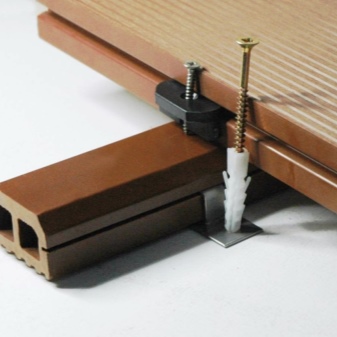
Installation of polymer board flooring
Installing a polymer floor is also not particularly difficult. It is important that the floor base is as flat as possible; it is recommended to make a concrete screed. The next stage is the installation of lags, and the greater the load is assumed on the surface of the coating, the closer the lags should be to each other. So, if you are building a terrace where there will be a lot of people and heavy furniture at the same time, then the distance between the logs should not exceed 15 cm.
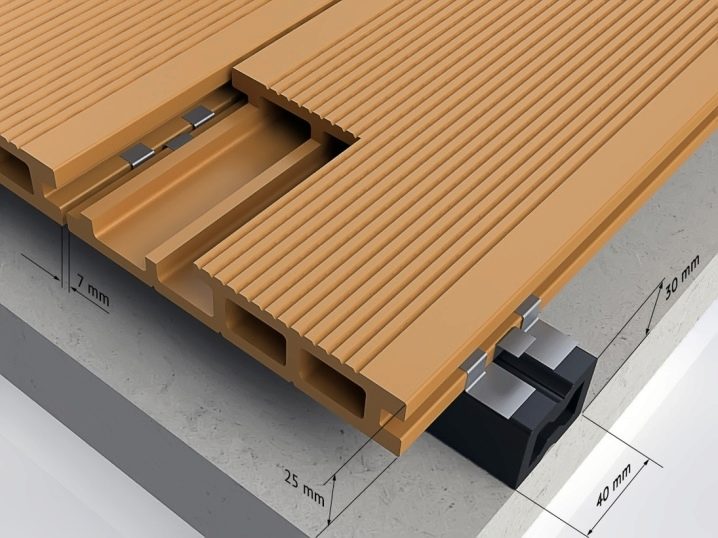
Lags can be made from various materials. Metal - the most reliable and durable.On the plastic boards there are already special locks for attaching to the logs, but you still have to use self-tapping screws - the first board must be fixed with them.
The beautiful appearance of the polymer floor often spoils the end space - however, manufacturers offer various decorative plugs to solve this problem. Polymer boards are well cut, while no chips or cracks form, so you can safely use them in arranging areas for resting fantasy forms.
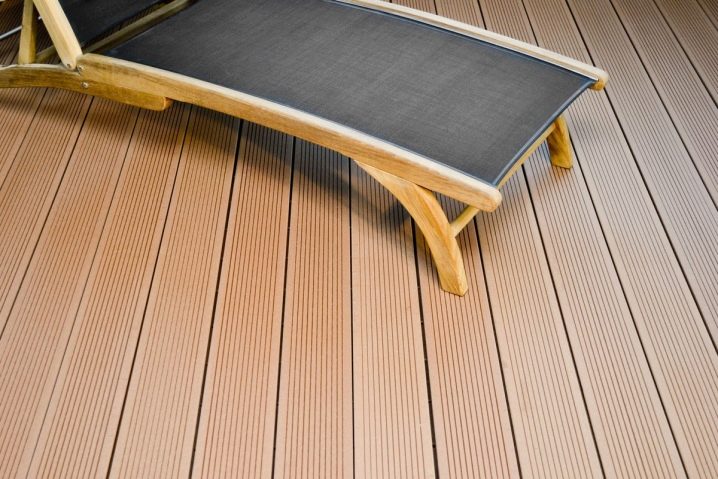
Coating care
It is quite easy to take care of both natural and polymer decking boards, and standard care involves only cleaning from dirt, if necessary, and periodic wet cleaning. Do not use aggressive chlorine-based detergents, or use abrasive substances or sand for cleaning.
It is imperative to clean snow and ice using plywood shovels, as metal can damage the floor surface. If there is not much snow, then an ordinary plastic broom will do the job just fine.
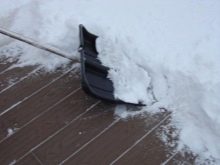
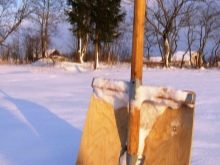
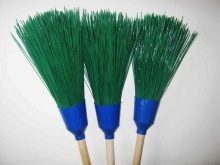
In the summer, you need to wipe the floor of the terrace with a dry cloth if dew accumulates on it.
If the surface is heavily soiled, then it is necessary to use a soapy solution and a brush (not metal) for cleaning. Most dirt, including greasy stains, can be dealt with by liquid laundry soap. By the way, greasy stains will be a serious threat to natural decking made of larch and other types of wood. If you do not quickly remove them with hot water and soap, then it will literally "be absorbed" into the wooden surface.
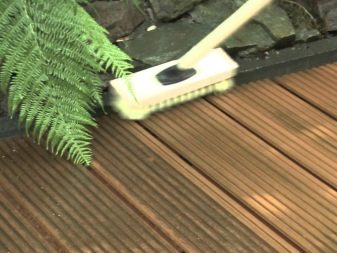
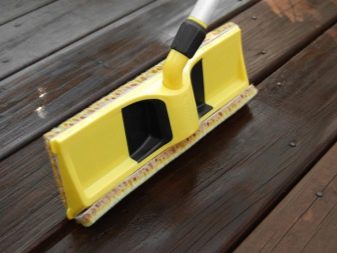
Sometimes the thermal board may become covered with small specks. - this is how we can observe a defect called "water spots" by specialists. It is the tatin contained in the composite board that comes out due to the use of any aggressive detergents or anti-rust agents containing oxalic acid. The dots will disappear over time, but you won't be able to clean them.
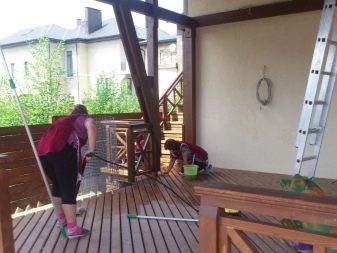
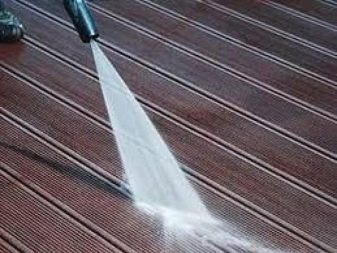
Crushed berries and spilled wine are common problems. Such stains must be removed immediately, since it will be very difficult to do this the next day. If traditional soapy water doesn't work, you can use chlorine-free bleach.
As a last resort, if the stains spoil the appearance of the decking very strongly, it can be painted. When choosing a paint in a hardware store, you need to consult with specialists - whether the chosen paint is suitable for outdoor work and the floor of the terrace.
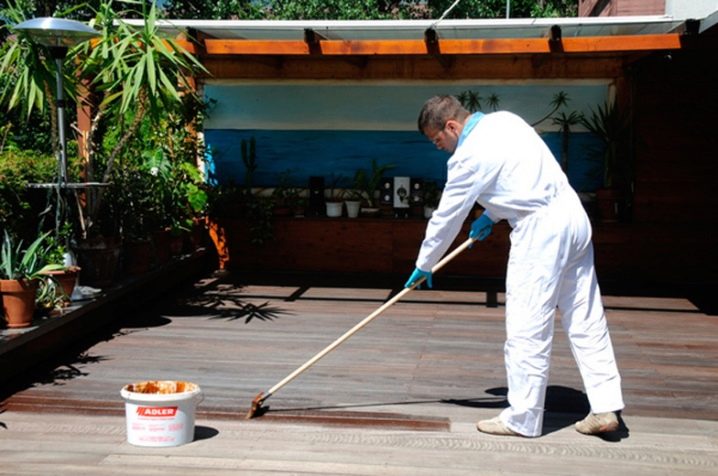
For an overview of WPC decking, see the video below.





























































The comment was sent successfully.